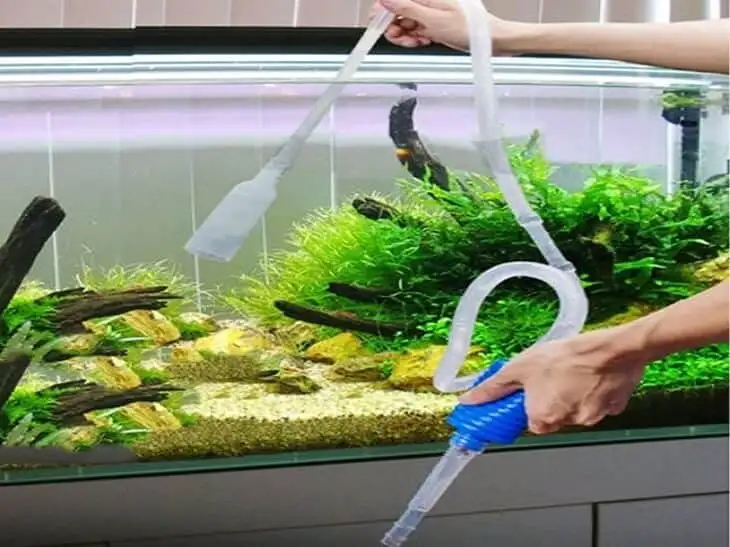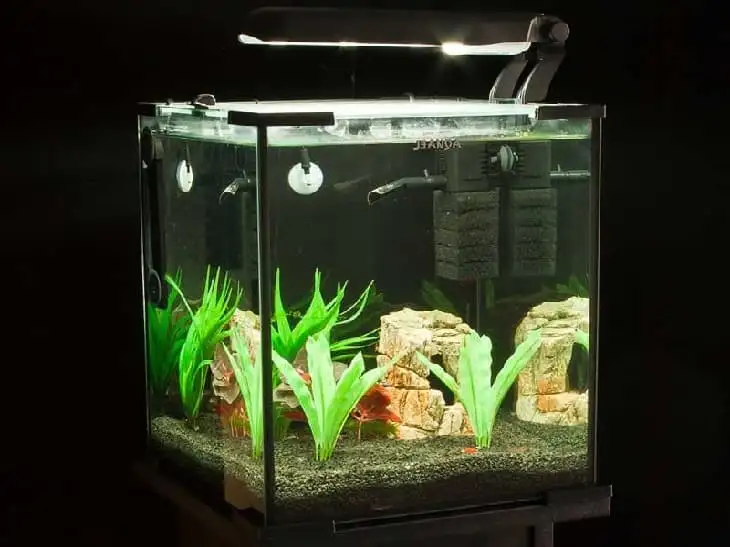HOW TO INSTALL A SALTWATER AQUARIUM

In terms of colour variety, the saltwater aquarium is beyond competition. Of course, many aquarists would like to have one at home for the first time. So as not to make any unfortunate mistakes, let us explain all the nuances of the saltwater aquarium installation.
The basics
Coral reefs occur in tropical parts of the oceans in clear water.
Corals kept in aquariums inhabit only the clearest ocean waters where its parameters (temperature, chemical composition and sunlight). Many fish and invertebrates live in these conditions, and they are found only here. So if you want to keep saltwater fish and invertebrates in your aquarium, you should do your best to reproduce all their natural conditions as faithfully as possible.
Choosing an aquarium
The first thing you need to do is buy an aquarium. The larger the volume of the aquarium, the more stable the water parameters will be in it. Stability is key for the preservation of corals, so purchase a minimum 250 liter aquarium if at all possible. Last but not least, lighting plays a role for all the inhabitants of a saltwater aquarium. Corals require bright light, and the best way to get plenty of light in the aquarium is to choose an open top aquarium, and then install a powerful reef light at the back.
Open top aquariums provide better gas exchange and better light penetration from the light bulbs. However, there is a high risk of the fish jumping out of the aquarium. Special mesh covers which can be adapted to the size of your aquarium are commercially available to avoid this. Such covers will prevent the fish from escaping from the aquarium and, at the same time, allow light and oxygen to pass through practically unhindered.
A lot of equipment is used to maintain constant water parameters. Space needs to be allocated for a heater, aerator, skimmer, mechanical filter and, in some cases, automatic dosing equipment in a saltwater aquarium.
For this reason, many experienced aquarists choose a settling tank - an additional tank located underneath the aquarium and connected by piping. Sump tanks allow large quantities of equipment to be used, leaving them out of sight, but at the same time they can be easily accessed from the cabinet. Sump tanks also add extra volume of water to the system, increasing stability.
Lights
Most corals kept in marine aquariums are photosynthetic, which means they contain photosynthetic algae in their tissues, called zooxanthellae.
Corals have created this unique symbiosis with algae because the clear water they live in does not contain enough floating food particles for them to catch them.
In captivity, this means that we need to create bright lighting that mimics the tropical sun in the aquarium, which can be achieved by using high-powered LED lights. The light flux emitted by the lamps should be dominated by the blue part of the spectrum.
Filtration
A modern reef aquarium requires mechanical, biological and chemical filtration for waste disposal, all three types of filtration are best placed in a sump.
- Mechanical filtration is the physical capture of dirt particles from the water. Popular methods include filter wool or filter floss. The filter element should be flushed or replaced periodically.
- Biological filtration - this process converts ammonia into nitrite and then nitrate. Ammonia is very toxic to marine organisms, so biological filter media and beneficial bacteria are used to convert the waste into less toxic nitrate. Ceramic filter media is the most popular because it sinks, it can easily be placed in a sump and its porosity means that it quickly colonises the right bacteria and starts working.
- Chemical filtration - two types of chemical filter media are often used in reef aquariums - activated carbon and phosphate remover. Carbon removes dyes and odours from the water, making it clear and clean and promoting better light penetration. Phosphate is the enemy of coral reefs, both in the aquarium and in nature, so phosphate removal is the key to a successful reef aquarium.
Protein skimmers
A skimmer is a pre-filter that removes organics from salt water using very fine air bubbles.
Protein skimmers are available in many shapes and sizes and are powered by AC or DC pumps. Always buy the most productive skimmer that your budget will allow.
Sump-based skimmers are better than suspended skimmers because they have larger reaction chambers and can accommodate larger pumps, which means more bubbles and better protein removal.
Replenishing the volume of water in the aquarium
As you know, water evaporates. When water evaporates in a saltwater aquarium, you should bear in mind that only freshwater evaporates and the salt remains. This means that if you top up with salt water, the water in the aquarium will become more salty. Therefore, only refill with fresh water.
Wave pumps
Water in the ocean is constantly moving and because corals are in one place, they need wave action and water currents to bring them food and flush out their waste. They also use the movement of the water to distribute their eggs and colonise new areas. Because of this, a water pump should be installed in the aquarium to mimic the movement of water in the ocean.



